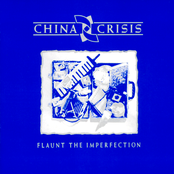Oh boy, is this a cracker – this wonderful enquiry came in yesterday from reader Derek Broadhurst, who’s found a very curious postcard which may shed light on the derivation of the name ‘Barracks Lane’, which is the road that funs from the A461 Lichfield Road at Sandhills, right over to the A5 Watling Street, east of Newtown.
The use of the term ‘Barracks’ has been the cause of much debate over the years, and there seems to be little evidence of any kind of military encampment in the area – but lots of people have theories.
I’ll let Derek tell you about the postcard above:
Hello, Bob…
I am an avid reader of your ‘blog’, and enjoy the contributions from people interested in the history of the Brownhills area. I now live in retirement in Mid-Wales, but was born in Walsall, and lived in Burntwood for many years.
I often travelled to work along Barracks Lane, and was always curious about the origins of the name. Your previous contributors seemed to suggest that the ‘barracks’ were located on the rise in the lane, where buildings now known as ‘Crestacre’ are located. However, I recently came across an old postcard, a copy of which is attached. Entitled ‘Entrance to Barracks, Brownhills’, this shows very substantial buildings, with a perimeter wall and fence. The buildings are of solid brick, but perhaps the accommodation for the soldiers consisted of wooden huts beyond. One military-type stands outside and another can be seen beyond the fence. In the left-hand distance can be seen a tree-lined lane rising to the right, and what appears to be another lane rising at a different angle. The picture does not seem to match location of ‘Crestacre’, and I wonder if the Barracks were on the east of what is now the A461? The one lane in the distance would be ‘Barracks Lane’, and the other lane the A461.
I have not been able to get back to the area since I acquired the postcard, and I do not have an old map of the area. I wonder if you or one of your other readers would like to comment?
With best wishes…
Derek Broadhurst
First and foremost I’d like to thank Derek for an absolutely wonderful contribution – this is a curious thing indeed, and thanks so much for sharing it.
The image is certainly thought provoking – there has been discussion here previously about the nature of any barracks in the vicinity and their possible location; but also a question from the earliest days of the blog related to the Smallpox Isolation Hospital that was operated at what is now Crestacre by Brownhills Urban District Council, and to the best of my knowledge, never had a single patient.
I have my own view of this, which I’m not going into just yet as I don’t want to lead the witnesses, so to speak – but I do welcome your view; please do comment here or mail me: BrownhillsBob at Googlemail dot com. Cheers.



 RSS - Posts
RSS - Posts


Cartersfield Lane maybe?
The card says “Brownhill” with out the “s”
http://www.bbc.co.uk/history/ww2peopleswar/stories/98/a6398698.shtml
“In 1939 I was working as a flour milling trainee at the C.W.S. flour mills Avonmouth when on September 3rd war against Germany and Adolph Hitler etc. was declared! On Jan 1st 1940 I was called to the colours and ordered to report to Brownhill Barracks, Plymouth for service with the army. ”
There are a number of Brownhills (that is more than one Brownhill !)
Does this fit the bill?
Well spotted, I couldn’t find anything, but was convinced it was elsewhere. Was going to call the post ‘The lost letter S’ but thought it too obvious.
Further contributions welcome!
Cheers
Bob
But just a mo …….
Does the card say “Crownhill” and is that the place in Plymouth.
Miss-reading and miss-spelling make life so hard……….
There was a Crownhill Barracks in Plymouth.
Bingo!
Plummer Barracks Crownhill Plymouth
http://www.daveuptonphotography.co.uk/plymouth-plummer-barracks-42
I owe you a pint young man!
Cheers
Bob
Plummer or Plumer
“Between 1916 and 1922 four large barrack blocks were built. It was renamed Plumer Barracks after First World War commanding officer Field Marshall Herbert Plumer.”
I can’t take any more ………
Hi Bob
so perhaps our own “Barracks” Lane is an old word for “barley”? ( remembering Sir Gerald Reece..live.. first lecture ).. pistols at twenty paces..
Thanks to Brownhills David…and a pint from me, too.
Field Marshall Plumer..name rings a distant bell….
kind regards
David
Just an idea, did the railway have barracks associated with its building, to house the Navies?
Hi Barry , I thought that at first but Barrack is a french word. The Navvies were mainly Englisn and Irish
Interesting Article, it is possible that locals saw these wooden hunts as barracks? http://www.railwayarchive.org.uk/stories/pages.php?enum=le123&pnum=3&maxp=8
Hi Bob,
I had never heard of Knaves Castle till you mentioned it in one of your fantastic blogs. You did a blog on local ancient/old roads some time ago, and I notice Knaves Castle was very near all these roads, and so was Barrack Lane.
Was there an armed protective force in the Barracks near by, to secure these rich highways/roads
Did these roads need protection in the early days of the sputtering to blossom days of the industrial revolution?
There is faint evidence of some law and order, John the “Deacons Grave” / “Dead mans Grave” at Pye green.
The local mining industry has churned away all evidence, and we will never know, but just an idea.
Thank you and love your blogs.
Steve Bladon. s.bladon1@ntlworld.com